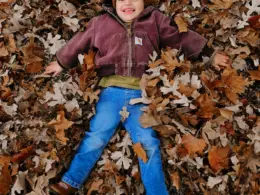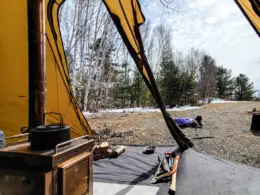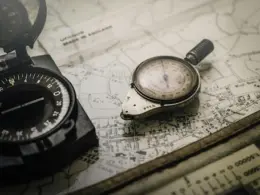You’re sitting by a campfire. The smell of burnt marshmallows fills the air. Nature buzzes all around you. Without warning, you are disturbed by the noise of mosquitoes. Or maybe, while on a quick hike, you discover a pesky tick attached to your ankle. Sound familiar? Bug season is here.
From spring to early fall, North America is an excellent place for outdoor activities but with the onslaught of black flies, mosquitoes, and ticks. If you are not prepared, you will suffer from itchy bites and tick-borne illnesses and spoil your trip.
We’re sharing a full bug season packing checklist to help you get the most out of every trail. From the right clothes to the right repellent, this guide has got you covered for comfort in the outdoors.
Table of Contents
Dressing for Defense
The first step to avoiding bites is through your wardrobe Choose long-sleeve shirts and light pants made from breathable, moisture-wicking fabrics. Bugs will be less attracted to light colors (gray or beige) than black and darker colors.
For example, a dark blue shirt may look nice but may attract mosquitoes towards you. A light tan shirt helps you to stay cool and keeps the bugs uninterested in you.
Permethrin-Treated Clothing
Enhance your protection through clothing that’s been treated in advance. Permethrin is an insecticide that repels both ticks and mosquitoes when used on fabrics. It’s safe for humans but lethal to bugs. You can get invisibly protected with jackets, socks, or even bandanas treated with permethrin.
Face and Feet Protection
A wide-brim hat and mosquito head net will save you from a lot of buzzing annoyance. When black flies are particularly annoying in your area, these are very useful. To protect your feet from ticks, wear closed-toe shoes along with high socks on the other end. For extra protection, tuck your pants into your socks It might seem silly, but it is very effective at keeping ticks away.
A piece of advice, always check for ticks on your clothes after coming from outside. Early detection prevents them from migrating to your skin.
The Right Repellents for Lasting Protection
Bug sprays are your frontline defense When used at 20% to 50% concentration, DEET is an effective mosquito and black fly repellent. Use sparingly on exposed skin; do not spray near eyes. Choose Picaridin if you want something that is less oily or scented. This scentless option gives the same protection without the “chemical smell.”
Natural Alternatives
If you don’t like chemicals go for citronella-based or lemon eucalyptus oil-based repellent. These are effective but they need to be reapplied more often than the chemical ones as they last for a lesser duration. Always check the product label for guidelines.
Application Tips & Tricks
- Apply repellents to exposed skin but avoid cuts or wounds.
- Reapply every 4–6 hours, or as directed on the label.
- Apply sunscreen first, then your repellent to maintain effectiveness.
- Avoid using more than recommended. Over-application wastes products and won’t improve protection.
For campsite bug control, pack area repellents like mosquito coils or citronella candles. Thermacell products also work very well. These create a perimeter of protection while you’re lounging or dining outdoors.
Smart Gear to Keep Bugs at Bay
Bug netting is vital if you are sleeping in an open space or going out for a long trip. A portable mosquito net will help make your hammock or sleeping bag bug-free. A screen tent prevents bugs and creates a common area for group campers while eating or playing cards.
Make sure to have tick-removal tools such as fine-tipped tweezers or a tick key. Removing the tick early lowers the chance of Lyme disease or other illnesses.
Alternatively, use a portable fan to blow flying insects like gnats and black flies away. Bugs have a hard time moving against forceful airflow so having a fan is a much-underrated tool to stay bug-free.
For evening campsite vibes, compact UV bug zappers can help keep bugs away. While they are not as powerful as personal repellents, they can help to cut down on large populations of insects near you.
First Aid and Post-Bite Care
Bites can happen even with the best preparation. Being equipped to handle them minimizes discomfort and prevents complications.
Essential First-Aid Items
- Anti-Itch Creams: Hydrocortisone or calamine lotion for immediate itch relief.
- Antihistamines: Carry these for severe reactions or swelling.
- Antiseptic Wipes: Clean bites or scratches promptly to avoid infection.
- Cold Packs: Portable cold packs help alleviate swelling after bites or stings.
For tick bites, use tweezers to slide underneath the head, twist it with the tweezers while pulling out, and carefully remove the tick. If you grab the tick and pull it straight up you will dislodge the body from the head and it will stay inside your body until it is expelled. Save it in a sealed bag for identification, especially if you experience symptoms like a rash or fever shortly after.
Final Thoughts
With the right gear and tricks, bug season doesn’t have to ruin your outdoor fun. From breathable and protective clothing to reliable repellents, tick tools, and first-aid essentials, you’ve got everything you need. Whether you’re camping, hiking or just hanging outdoors, customize the above checklist to your activity or destination.











